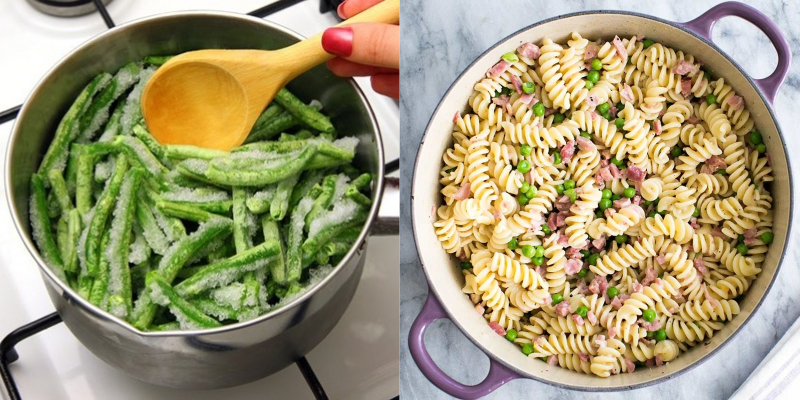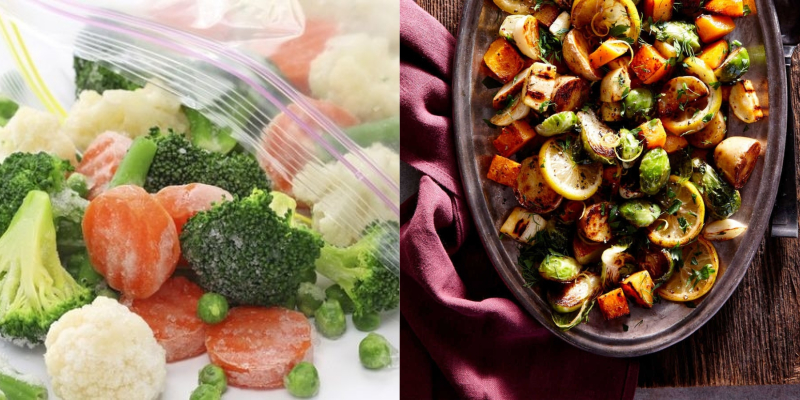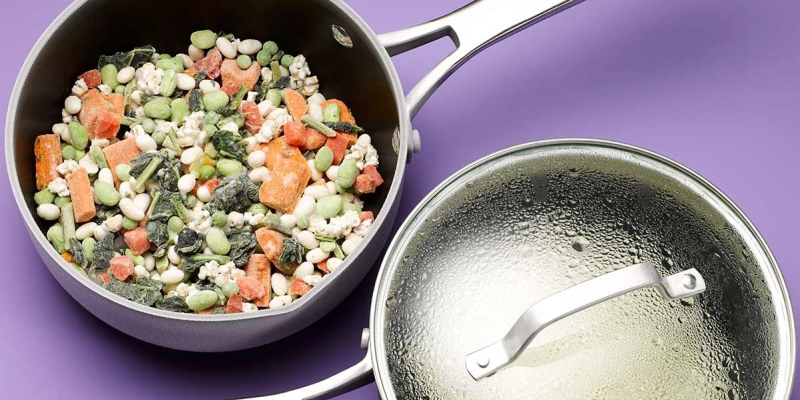Defrosting
When it comes to defrosting food, you might be inclined to leave it in the fridge overnight or let it thaw at room temperature. However, this can lead to a loss of essential nutrients in vegetables, especially if they are left for an extended period.
Tips:
– It is recommended to soak vegetables in cool water for 30 minutes prior to cooking, with a maximum defrost time of 1 hour.
– Each vegetable, depending on its intended preparation, will require a different level of thawing. For soups and stews, you can use the vegetables while they are still partially frozen. For salads and dishes with coatings, ensure complete thawing. For stir-fries, a brief defrost of 10-15 minutes is sufficient, as the small pieces will still have ice crystals inside, and the remaining water will add a crisp sweetness.

Always Cook Thoroughly
Aside from salads, it is generally recommended to cook vegetables after thawing. However, prolonged cooking at certain temperatures can lead to a loss of flavor and nutrients, resulting in soft and mushy vegetables.
Tips:
– For dishes like stir-fried noodles, instead of fully cooking the vegetables, simply soak them in water for 10-15 minutes and toss them on a low flame to coat. Place all the ingredients under the layer of noodles, and mix everything together when serving. The heat from the noodles will gently cook the vegetables, maintaining their crispness.
– For smoothies and sauces, use frozen vegetables without cooking them first.
– For vegetables like broccoli and cabbage, which have a crunchy texture, defrosting is not necessary. Simply blanch them in boiling water over high heat for a brief period.

Grilling
While it may be tempting to use a microwave to grill frozen vegetables, this method is not recommended. Even after defrosting, the structure of frozen vegetables is not as intact as fresh ones, and grilling them can lead to sogginess.
Tips:
– Avoid using a microwave for grilling. If you must, place a heat-resistant plate under the vegetables.
– For an oven grill, preheat the vegetables and add oil or butter, grilling at a high temperature for a short duration.
– Alternatively, use a hot pan to dry-roast the vegetables, adding spices afterward. Grill over high heat, avoiding excessive tossing to prevent breaking the vegetables.

Cooking Time
As mentioned earlier, the structure of frozen vegetables is often compromised, leading to quicker cooking times compared to fresh produce. You cannot rely on the same cooking times as you would for fresh vegetables.
Tips:
– Depending on the weight and type of vegetable, adjust the cooking time accordingly: Reduce by 2-3 minutes for stir-fries, and 1-2 minutes at the end for soups or stews, stirring gently before turning off the heat.
– For dishes with a high liquid content, like soups and stews, simply bring the liquid to a boil and then stop the cooking process to retain nutrients.

Using Only Long-Frozen Vegetables
Relying solely on long-frozen vegetables is a habit to avoid. Over time, frozen vegetables can lose 10-20% of their nutrients. If you only consume vegetables that have been frozen for extended periods, your body may not receive the full range of necessary nutrients.
Tips:
– Combine frozen vegetables with fresh produce.
– Use a mix of newly frozen and older frozen vegetables.
– Choose suitable recipes and avoid freezing a single type of vegetable for more than three months.
Feel free to browse our collection of frozen vegetables and discover a variety of options to suit your needs!

Frozen vegetables are typically harvested at their peak and retain a good amount of nutrients. However, proper defrosting and cooking techniques are essential to minimize any nutrient loss.

































